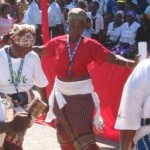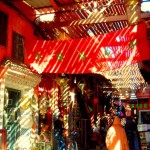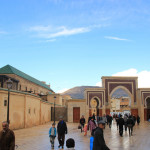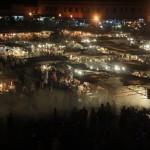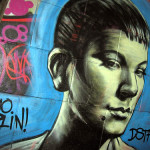
Sometimes missing the bus isn't such a bad thing.
When traveling, missing the bus can turn out to be an eye opener as you find yourself exploring where you wouldn’t otherwise go. In Mozambique, Sojourner Walker finds herself doing just that…
Maputo has weaseled its way into my affections to become one of my favorite cities. I happened upon Maputo, the capitol of Mozambique by mistake and quite serendipitously, found a diverse, thriving, western-style metropolis rooted deep in Southern African values.
Having missed the bus that was to transport me eight hours North towards the beach paradise of Inhambane I did what any curious traveler would do, I gave in to fate and set off exploring the city.
Mozambique is known as “Terra de beau gents”- land of the good people and you’ll find plenty of them in and around Maputo despite its reputation for being rough and dangerous. Maputo is gritty and yes, as with any big city you must exercise caution, but there is also another side to the city where life and humanity thrive set against the backdrop of the Indian Ocean.
The entrance to the Botanical Gardens
Founded as Lourenco Marques by the Portuguese around 1780, Maputo pronounced (muh POOT oh) was a thriving, sprawling Portuguese settlement. In 1975, when Mozambique gained independence from the Portuguese colonial regime, the city experienced a shift as the Portuguese pulled out literally overnight destroying what they could of the infrastructure in their wake. In 1976 as Mozambicans gained control of and began to rebuild their city, its name was changed to Maputo.
Over the decades, Maputo has evolved into what it is today, a city of great contradictions and potential. Certain sections of the city are immaculate, home to grand tree-lined commercial and residential streets, sprawling urban beaches and beautiful architecture. Yet other sections of the city bear witness to some of the most squalid and desperate conditions in the world.
Over the decades, Maputo has evolved into what it is today, a city of great contradictions and potential.
With the majority of its population under the age of thirty-five, a cultural revolution is brewing. It’s evident in the many art spaces, music venues and cafes. Finding myself in Maputo for the day I hit the ground running. My first stop was the Jardim Tunduru, a stunning botanical garden that provided much needed shade and tranquility. I was in an oasis of green, surrounded by vibrant tropical flowers, fountains, ornate structures and lush vines. Couples strolled by hand in hand, old people sat on benches basking in the shade, school children in uniforms and backpacks ran about, skipping rocks and eating ice cream cones. I found a cool spot beneath a cashew tree where I shamelessly and unobtrusively people watched and took everything in.
An art gallery inside the Maputo Mall
My next stop was the Museu Nacional d’Arte, one of Maputo’s most respected art museums. The admission was free. The Museu Nacional d’Arte featured many prominent Mozambican artists with a focus on modern art. The artwork, a blend of colorful paintings, prints and carvings was captivating and haunting. Many of the pieces addressed colonialism and the brutal twenty something year civil war that followed independence.
The museum staff were very open and accommodating. Everyone spoke English and I was fortunate enough to get a crash course on the history of Mozambique compliments of one of the museums curators who was more than happy to talk to me about the artists and themes that filled the two floors of the museum’s space.
After window shopping at the Maputo Mall, a large air conditioned shopping center with everything one could possibly imagine, I gathered with a bunch of tourists in the open air food court to enjoy some gelato. The shopping center was modern, immaculate and very expensive. It spoke very little of Mozambique and it’s culture, serving mainly as a hub for tourists and ex-pats.
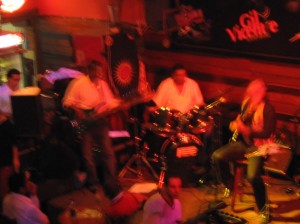
Blues band plays into the early hours, Maputo, Mozambique.
Holding true to the essence of Maputo was the Mercado Municipal, a large central market. The Mercado was hot and lively, bursting over with colorful fruits and intricate crafts. I stepped right in and began haggling with craft vendors in my broken Portuguese. I walked away with a mortar and pestle and a basket for less than five dollars.
Hot and uncomfortable in the evening sun, I sought refuge once again in the air-conditioned Maputo Mall where I grabbed some pizza and sipped on a Coke to pass the time.
That night, per-recommendation from an enthusiastic waiter, I popped into Gil Vicente, a bar/café/ live music venue which was host to a surprisingly hip local and international crowd. Two local blues groups took me on a lively musical journey into the wee hours of the night. Some of the songs were familiar covers, most were originals, they were all engaging. Gil Vicente was a great space with a vast and inexpensive drink selection and a small, impressive art gallery on it’s second floor featuring the work of young local artists. The second floor, more of a lounge with sofas was my home for the evening.
Sometimes missing your bus isn’t a bad thing. At five am, when I left Gil Vicente to catch my bus, the city was still going, bursting with energy and life. Perhaps it is Maputo that is the city that never sleeps.
All I know is that I will be back, and the next time it won’t be an accident.
Have you ever found yourself exploring a town or city you otherwise wouldn’t have? Let us know in the comments.

